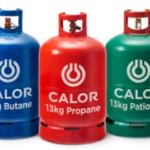

How to use and store gas bottles in the autumn and winter months
Gas bottles have many uses, from backup heat generation for the home to BBQ gas for camping trips. Gas bottles can be used as a sole energy source in off-grid locations or targeted heat generation, for example, in outbuildings that do not have other energy sources.
The portable nature of gas bottles is great for a range of purposes, including fuelling portable heaters which enables more enjoyment of the outside even once the weather has turned. Gas-powered stoves can be used to warm hot chocolate or soup to provide warmth when star gazing or on hiking trips, for example.
With so many possibilities for use, often involving the transportation of the gas bottles, some thought must go into how to move and store the bottles safely.
How to safely transport gas bottles
London Gases can arrange safe transportation to London destinations, taking care of this initial delivery. Should the gas canisters have an onward journey, carry out these checks to ensure safety during the trip:
- Load the gas bottles upright
- Ensure the bottles are secured so that they do not move around in transit
- Check that the bottles are tightly fastened to avoid gas leaking during the journey
- Make sure the vehicle has adequate ventilation
- Explore fitting a blanking cap to prevent accidental opening during transit
How to safely store gas bottles
Gas bottles such as Calor gas are invaluable for many purposes, but they do come with safety risks if not stored safely. Storing gas canisters safely involves:
- Visually check the bottle is in a good condition before storage
- Keeping the gas bottle in an upright position
- Ensuring the bottle is closed and the taps are tightened to prevent any gas from leaking
- Store the gas bottles away from residential properties
- Store the gas bottles outside away from any potential ignition sources
- Ensure the storage area is cool and dry and has some shelter
- Never store gas bottles underground
